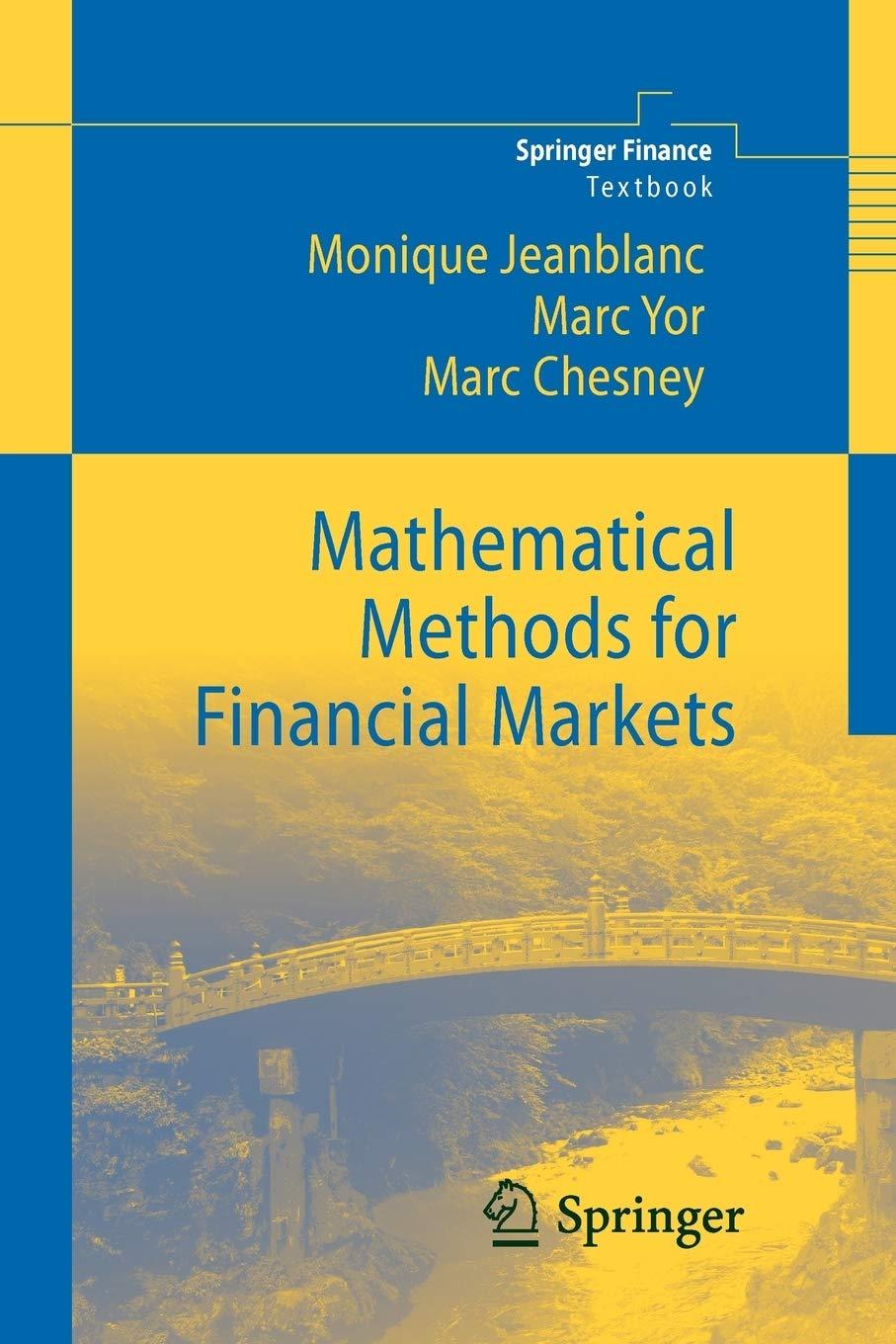Let (S) be a price process, assumed to be a continuous local martingale, and (varphi) a (C^{1})
Question:
Let \(S\) be a price process, assumed to be a continuous local martingale, and \(\varphi\) a \(C^{1}\) concave, increasing function. Denote by \(S^{*}\) the running maximum of \(S\). Prove that the process \(X_{t}=\varphi\left(S_{t}^{*}\right)+\varphi^{\prime}\left(S_{t}^{*}\right)\left(S_{t}-S_{t}^{*}\right)\) is the value of the self-financing strategy with a risky investment given by \(S_{t} \varphi^{\prime}\left(S_{t}^{*}\right)\), which satisfies the floor constraint \(X_{t} \geq \varphi\left(S_{t}\right)\).
Using an extension of Proposition 4.1.7.8, \(X\) is a local martingale. It is easy to check that \(X_{t}=X_{0}+\int_{0}^{t} \varphi^{\prime}\left(S_{s}^{*}\right) d S_{s}\). For an intensive study of this process in finance,
Proposition 4.1.7.8:
Let \(\varphi\) be a \(C^{1}\) function. Then, the process
\[\varphi\left(M_{t}\right)-\left(M_{t}-B_{t}\right) \varphi^{\prime}\left(M_{t}\right)\]
Step by Step Answer:

Mathematical Methods For Financial Markets
ISBN: 9781447125242
1st Edition
Authors: Monique Jeanblanc, Marc Yor, Marc Chesney





